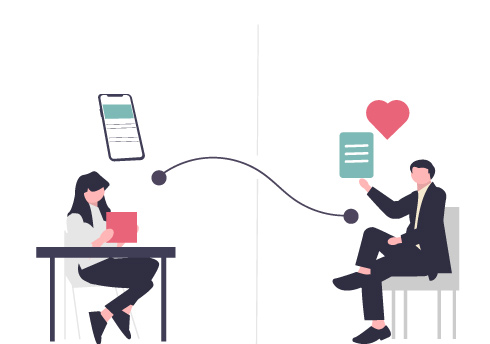Anxiety disorders affect approximately 264 million adults worldwide, leading to significant impacts on daily functioning, including avoidance behaviors, excessive worry, and fear. These disorders often begin early in life and, if left untreated, can result in long-lasting impairments in functioning. Cognitive-behavioral therapy (CBT) is a highly effective treatment for anxiety disorders, focusing on educating clients about the link between their thoughts, actions, and emotions and providing them with skills to break these connections.
CBT is typically delivered in clinical settings where therapists collaborate with clients to develop and practice skills, often using homework to reinforce the skills learned during therapy sessions in real-life situations. Recent technological advancements have expanded treatment accessibility through online platforms and mobile apps. Despite their potential benefits, many mental health apps are not optimized for clinical use and often fail to gain traction. High attrition rates and rare sustained use are significant challenges faced by these technologies.
One of the main reasons for disengagement from mental health apps is the lack of personalization and customization options. Current technology-based interventions are often not tailored to account for individual variability. Research indicates that mental health technologies could benefit from some human support from a coach or therapist to maintain engagement.

Therapists understand that treatment should be tailored to the unique context of each client, considering both the diagnosed disorder and the individual characteristics of the client. However, little is known about how CBT therapists’ input can be best integrated into the personalization of mobile technologies, how therapists view this possibility, and which features and content are worth shaping.
This paper, published in the International Journal of Human-Computer Studies explores CBT therapists’ perspectives on delivering tailored intervention content to users of mental health mobile technologies for anxiety management. Using interviews and ideation sessions, it uncovers current therapy practices and examines how tailoring can be offered at different treatment stages and what tailoring needs should be considered. Through this understanding, we seek to uncover a broader range of possibilities for designing personalized mobile applications for therapist-supported CBT.
The results showed that clients play a central role in shaping the content of therapeutic sessions and consequently affecting the delivery of intervention content through the use of apps. Therapists requested an active role in the personalization of such systems and requested a modular approach in which a dashboard is used to tailor the content of predefined modules based on different client characteristics. In contrast to existing technology-based systems for intervention delivery, effective personalization requires the modification of predefined modules. Our study shows that personalization strategies for the delivery of intervention content based only on the type of anxiety disorder (e.g. Generalised Anxiety Disorder) or severity of symptoms are inadequate for the design of highly personalized interventions and different user characteristics should be taken into consideration.
We highlight the different client characteristics that should be taken into consideration in the design of personalized technologies. Designing personalized digital interventions for anxiety disorders requires supporting flexibility and taking different individual characteristics into account.
The integration of personalized mobile CBT applications has the potential to revolutionize anxiety management by enhancing client engagement and support. By involving therapists in the tailoring of treatment and developing technology-enabled services, we can create sustainable, effective, and personalized mental health interventions that extend the reach and impact of traditional therapy. As we continue to explore and innovate in this field, the ultimate goal remains to provide clients with the best possible support for managing their anxiety, both within and beyond the therapy room.
Refer to this publication:
Balaskas, A., Schueller, S. M., Doherty, K., Cox, A. L., & Doherty, G. (2024). Designing personalized mental health interventions for anxiety: CBT therapists’ perspective. International Journal of Human-Computer Studies, 103319.


